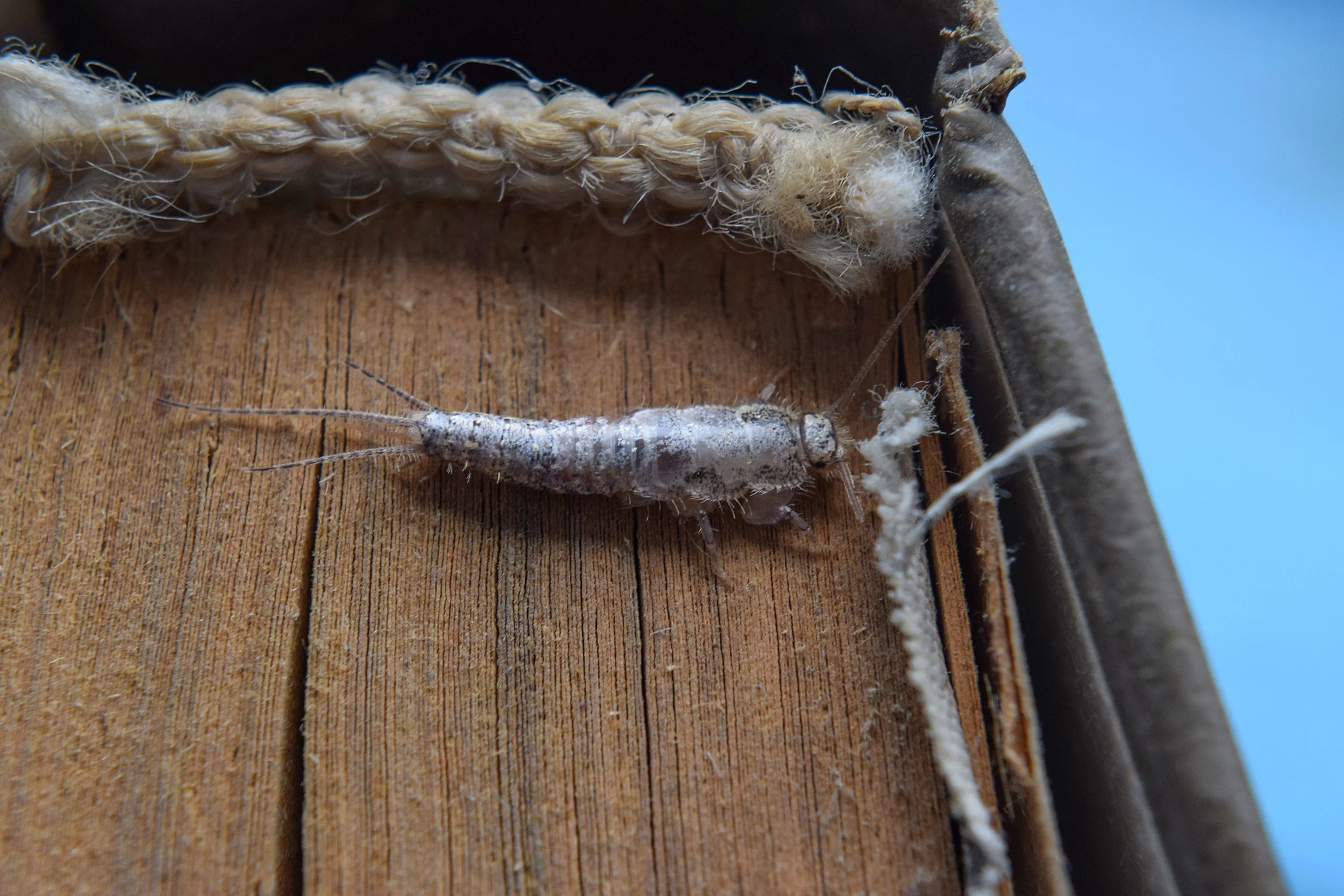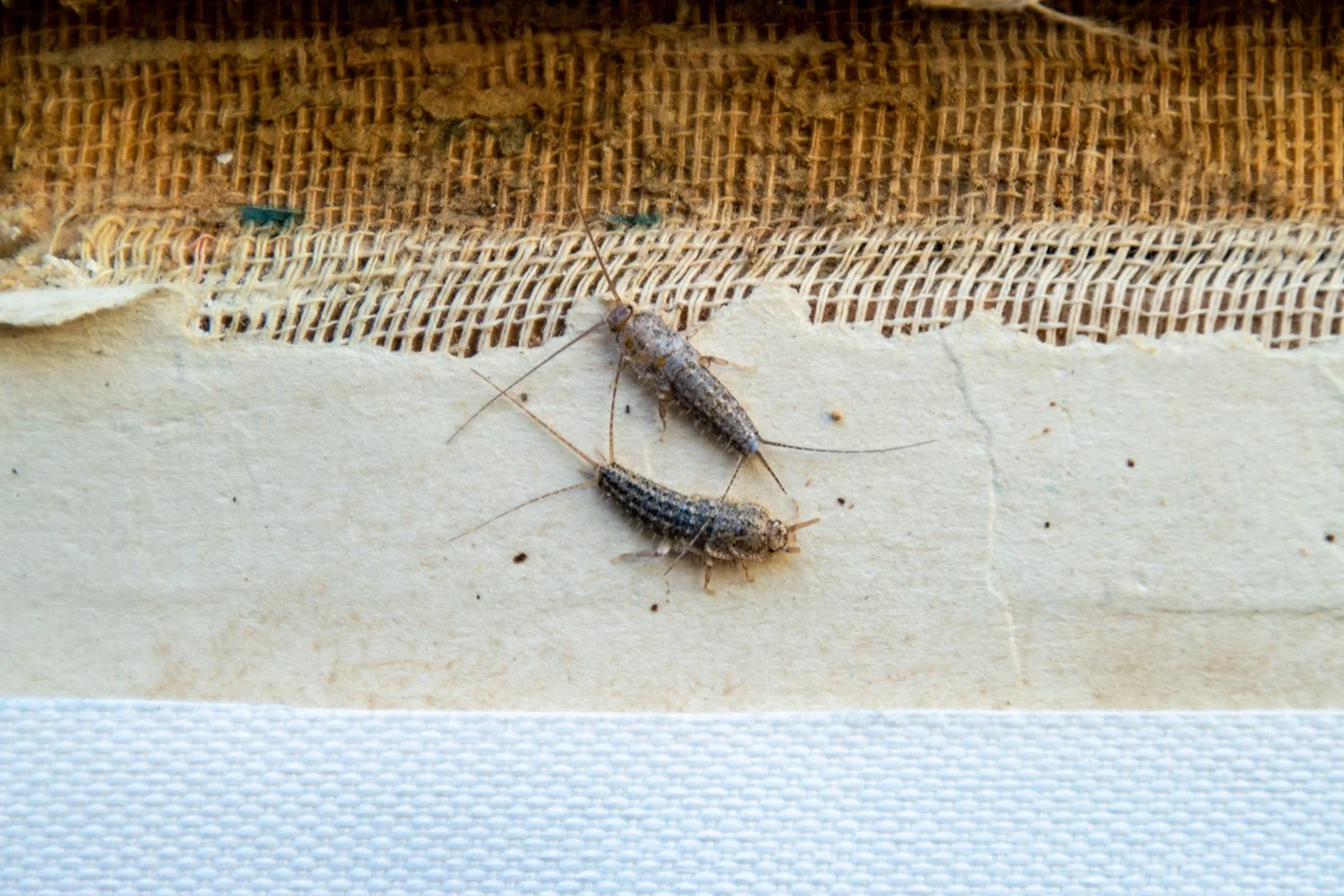Silverfish
Silverfish are small, wingless insects known for their silvery-gray appearance and fish-like movements. While they don't pose direct harm to humans, their presence can lead to significant damage to household items and may trigger allergic reactions in sensitive individuals.



Silverfish Identification
Silverfish are elusive, fast-moving insects that can go unnoticed until damage is already done. Knowing how to identify them, and where they hide is the first step toward protecting your home.
-
Silverfish are about ½ to ¾ inch long
They have a flattened, elongated body covered in shiny, silver-gray scales
Equipped with long antennae and three tail-like appendages at the rear, giving them a distinct appearance
-
Habitat – These pests are nocturnal and prefer dark, damp environments
Common hiding spots include basements, bathrooms, kitchens, attics, and crawl spaces
They thrive in areas with high humidity and often enter homes through cracks, crevices, or on infested items like old books, paper, and cardboard boxes
Silverfish Prevention and Control Tips
Silverfish thrive in dark, damp environments, but with the right steps, you can reduce their presence and protect your home. Use the tips below to help keep your space silverfish-free. Consistent maintenance and cleanliness, paired with moisture control, are key to preventing silverfish infestations before they start.
-
Seal entry points – Inspect and seal cracks, gaps, and crevices around doors, windows, baseboards, and utility pipes using caulk or weather stripping to block silverfish access.
Reduce clutter – Limit storage of paper products, cardboard boxes, and old newspapers, especially in moist areas. Store valuable documents and books in sealed plastic containers.
-
Dehumidify – Use dehumidifiers in basements, bathrooms, and other high-humidity zones to keep indoor humidity below 60%; a level too dry for silverfish to thrive.
Fix leaks – Repair leaky pipes, faucets, and roofs promptly to eliminate unwanted moisture sources that attract pests.
-
Regular vacuuming – Clean carpets, rugs, and upholstered furniture frequently to remove crumbs, dust, and potential silverfish eggs.
Proper food storage – Keep dry goods like flour, cereal, and pet food in airtight containers to cut off food sources.
Silverfish Diet and the Damage They Cause
Silverfish are known for feeding on items that contain starches and polysaccharides, which makes many everyday household materials vulnerable to infestation. These pests can cause noticeable and costly damage over time if left unchecked.
-
Paper products – including books, wallpaper, and important documents
Glue and adhesives – found in book bindings, wallpaper paste, and cardboard
Fabrics – such as cotton, linen, and silk
Dry foods – like cereals, flour, and even pet food
-
Irregular holes in paper, clothing, or food packaging
Yellow stains or scales left behind on infested materials
Damage to sentimental or stored items, such as photo albums and archived documents
If you’re seeing these signs, it’s time to act—early detection and professional pest control can help protect your belongings from further harm.


